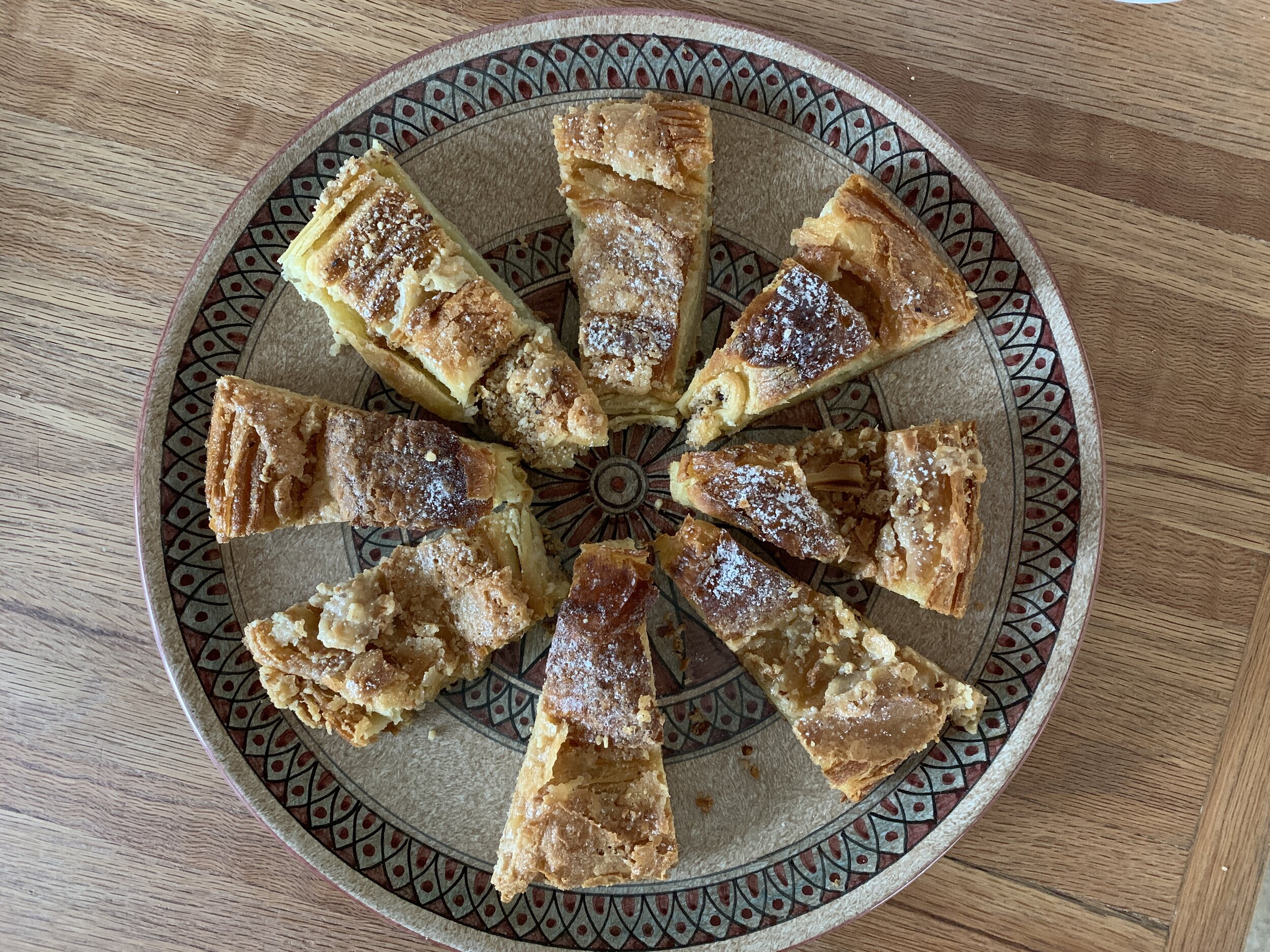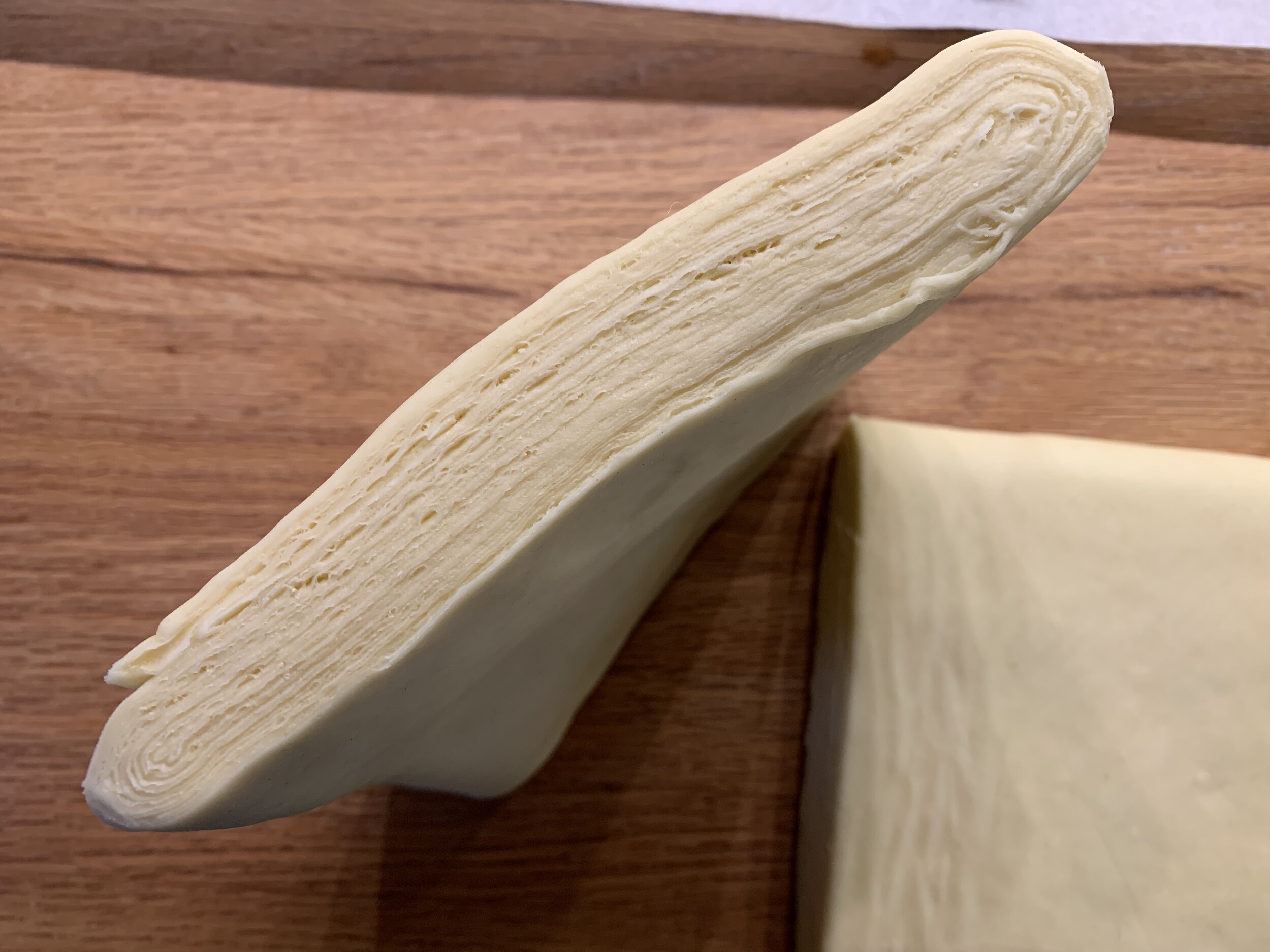Tosca almond torte
/This project came about as a result of three forces: Lindsey Shere, Brontë Aurell and Dorie Greenspan. Not a bad way to start eh?
For some months I’ve had the simple almond torte recipe from Lindsey Shere’s iconic book “Chez Panisse Desserts” on my to do pile. I still had some of Mandelin’s fabulous almond paste on hand and thought why not?!
So I made it and LOVED it!
Here’s the torte run down: butter a 9” springform pan or round cake pan and line the bottom with parchment; heat the oven to 325ºF; beat 250 g/1.25 cups sugar with 227 g/8 ounces soft almond paste (it works well to grate it!) to blend well; beat in 227 g / 8 ounces soft unsalted butter and a teaspoon vanilla extract then cream for several minutes until light and fluffy; beat in 6 large room temperature eggs, ONE at a time, until each is thoroughly blended in; fold in 130 g/1 cup all purpose flour, 1.5 teaspoons baking powder and 1/4 teaspoon salt, blending just until combined. Transfer batter to prepared pan, smoothing the top with a small offset spatula.
Bake for about an hour to an hour and a quarter, until a tester inserted in the center comes out clean. Remember - always check sooner than later! Gently touch the center and it should feel springy. Let it cool in the pan about 20 minutes then un-mold and cool on a wire rack.
Here it is in all its simple glory, bottom side up. No muss, no fuss - just one delicious cake. On it’s own dusted with confectioner’s sugar or with some lightly whipped cream and fresh berries, it’s all good.
Then two other things happened that pushed me to the next step in this process. I happened upon a Dorie Greenspan piece in NYT Cooking with a recipe for “Swedish Almond Cake”.
Hmmm I thought, this one sounds good too. While the cake itself doesn’t contain any almond ingredients, It’s deelish and buttery and includes a cooked almond/butter/sugar/flour topping (known in Sweden as “tosca” topping) that goes onto the cake part way through the bake.
I made D.G.’s version and it’s fantastic. Just go to the recipe and try it yourself - you won’t be disappointed.
Now cue Brontë Aurell’s book “Brontë at Home” to which I’ve referred in both my rye buns and Danish Kringle posts. That’s where I first learned about tosca topping. Her’s is very much like the one Dorie G. uses with just a few slight variations. Hey! Why not make Lindsey Shere’s almond torte and add the tosca topping to it? What a wonderful almond-y treat it could be!
And so I did.
A quick note: I recommend using a springform pan for this since it would be difficult to turn it out of a standard round cake pan due to the topping.
Prepare the almond torte batter and once the cake is in the oven, get the topping ingredients ready to go. I tweaked DG’s topping recipe by reducing the butter and sugar, using brown sugar instead of granulated and subbing heavy cream for milk.
Here’s my mise: 80 g / 5.5 tablespoons unsalted butter; 100 g / ~ a cup sliced almonds; 80 g / scant 1/2 cup dark brown sugar; 2 tablespoons all purpose flour; 3 tablespoons heavy cream.
The baking time for the almond torte is somewhat longer than for Dorie G’s butter cake but either way, bake the cake about half way then make the tosca topping. Mix the topping ingredients in a saucepan over medium heat and stir to melt the butter. Bring to a boil and cook for a minute or so.
Take the partially baked cake out of the oven and gently portion the topping over the cake, spreading with a small offset to cover the top. Pop it back into the oven and finish baking.
The topping should become beautifully golden, the liquid-y appearance should set and caramelize and the aroma . . . . Oh my.
Soon after it comes out of the oven take a paring knife or offset spatula and gently run it around the edges of the cake so they won’t stick to the pan. Then let it cool 10-15 minutes, remove the sides of the springform pan and finish cooling to room temperature.
Enjoy a slice with a fresh cup of coffee or tea or just by itself au naturel. It is SO good.
Here’s to a safe and calm summer with beautiful deep blue skies and nature’s varied hues to give us peace.
We can do this.








































